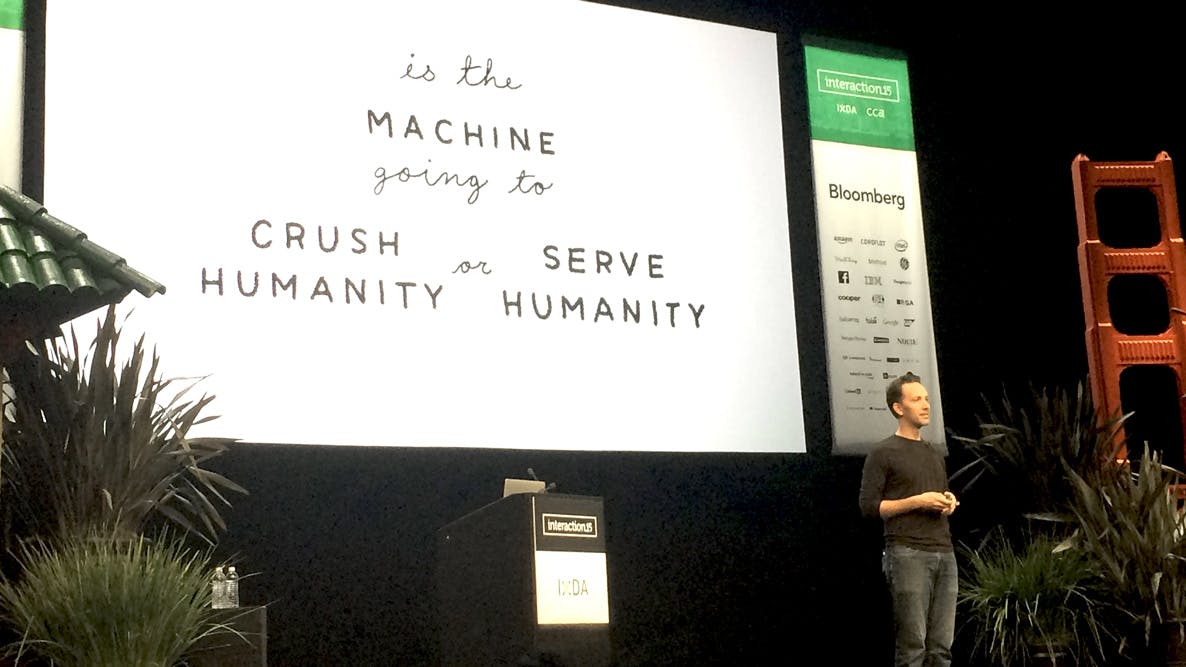What does Spiderman have to do with user experience design?
UX design is maturing and none too soon for the technology challenges and opportunities we face.
What does Spiderman have to do with user experience design?
I was recently at the Interaction15 conference put on by the Interaction Design Association (IxDA) in San Francisco with my colleagues Ken Soliva and Curt Irwin.
User experience (UX) design is a relatively new field and the interactive world around us is advancing at an alarming rate despite a lack of designers to meet the demand. Although the IxDA, which has only been in existence for eight years, brings together consulting firms and large enterprises, the themes continue to evolve year to year as the industry progresses. Just two years ago, at the conference in Toronto, I would have said that the overarching theme was "Excitement and confidence… with a little ego." This year’s conference in San Francisco had a slightly less naïve feel to it and came across inspiring but also more practical.
As the world becomes increasingly complex, users are demanding smarts in everything they do. As designers work toward addressing these shifts, that process will require time and experimentation to figure out how to do it right. Ayah Bdeir, founder of littleBits, talked about how magnetic electronic modules enable people to see and learn about how ‘smart’ actually works – especially designers so they know what intangibles they are really dealing with. But Kara Swisher from Re/code, an independent tech news, reviews and analysis site, reminded us that the objective is to make the technology disappear so the experience is just the experience. No one actually talks about combustion engines when they get in the car.
But the space in between ‘knowing how it works’ and ‘making it disappear’ is a pretty dangerous place. There can and will continue to be unintended consequences. For example, crossing the street while looking at your phone. Driving while plugging in your GPS destination address. Putting your fitness tracker to sleep because you were clapping at a concert. Some consequences are more dangerous than others but as ‘smart and connected’ moves fully into our lives, we face advances in healthcare, policy and humanitarian endeavors. These will be great successes once we understand what we don’t know yet.
Designers have a magical and powerful skill of being able to see and create the future. And they can do this not just for what a product might look like and how it will work and interact with you, but for complex use scenarios and even intangible services that unfold over time…in the future. Humans are one of the only brains that can make the mental leap into modeling what might happen in the future. Design is obscenely abstract as compared to other fields of study and designers know how to leverage this and do it very well.
What we don’t know is what is actually happening in the world today. It has become so complex with new technologies, ubiquitous computing, VCs and startups, and access to big data. Allan Chochinov, chair and co-founder of SVA’s MFA in Products of Design Program, said the world we live in today is a little bit like a system of checkers on a chess board. So just like learning to ride a bike or sending your child off to college, it is filled with scary unknowns. Designers know how to evaluate and reduce the risks that we know about but not the ones that are unknown. Hence Gentry Underwood, Mailbox co-founder and Dropbox head of design, asks provocatively whether the machine will crush humanity. I am confident it will not.
This year’s conference brought me a very humbling awareness of the responsibility upon us and that we are all working very hard to this end. Processes are put in place to make sure that ideas are tested and researched multiple times. Usability tests are being deployed. Service design is coming to life to better understand how we can optimize the lives we live in. Regulations are being put into place. We have a lot to juggle, but we are partnered with the right people to mitigate risk.
Marvel’s Spiderman, compliments of his creator Stan Lee, said “with great power comes great responsibility.” Although designers generally consider themselves more optimistic than powerful, we do have the power to shape the future. I am confident that we are also laser focused on being responsible – to people, to the world and to our children’s’ future. As each of us participates in designing the future through our own contributions I ask you to consider not only what is possible but how can we reduce the risks of the unknown. And approach those risks with as much passion as the possibilities. The future is bright.
